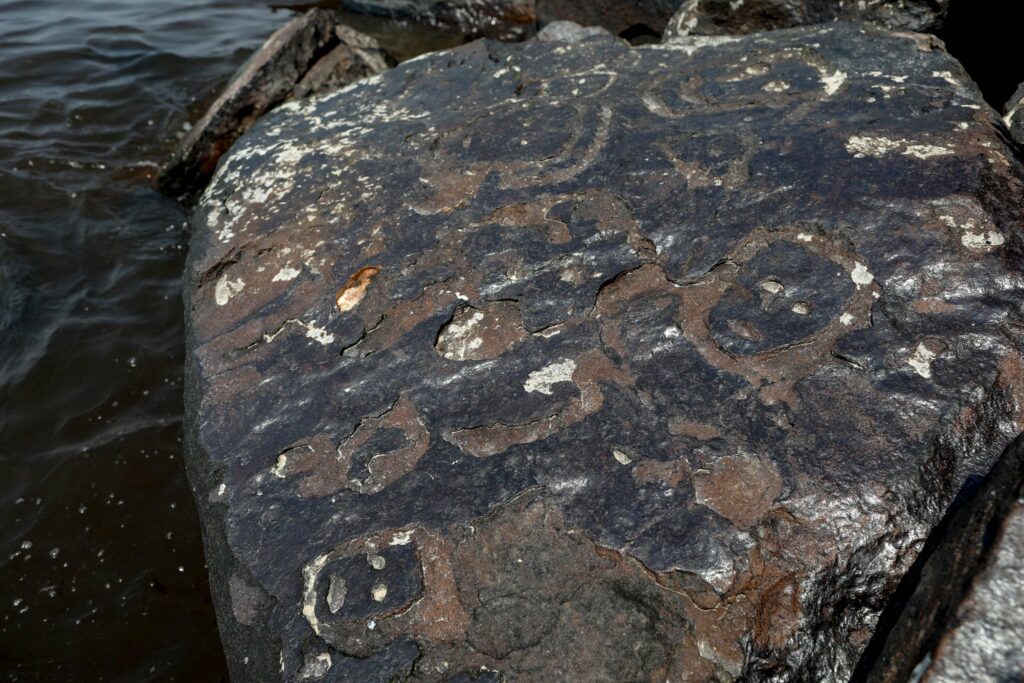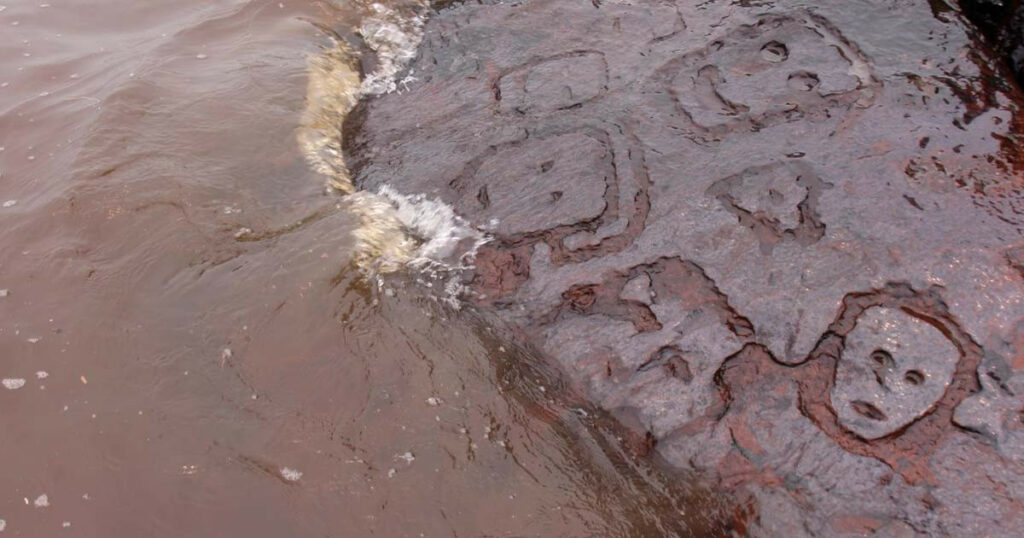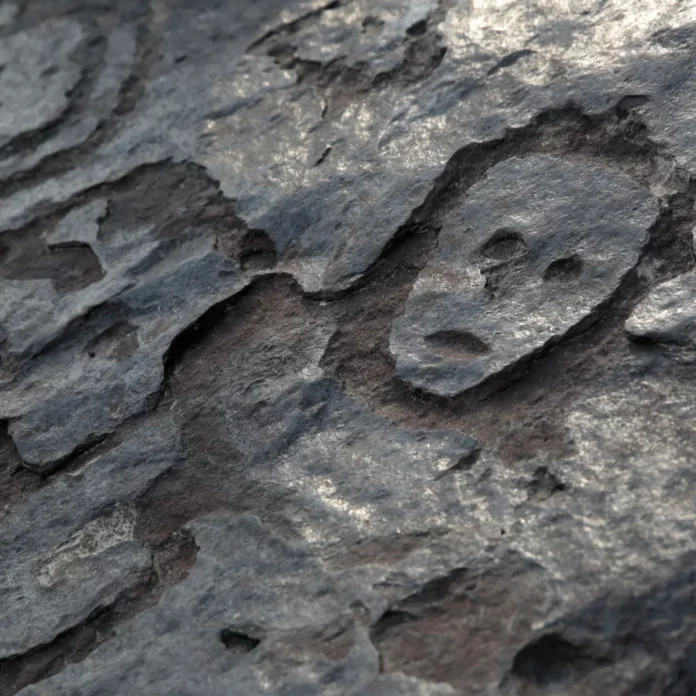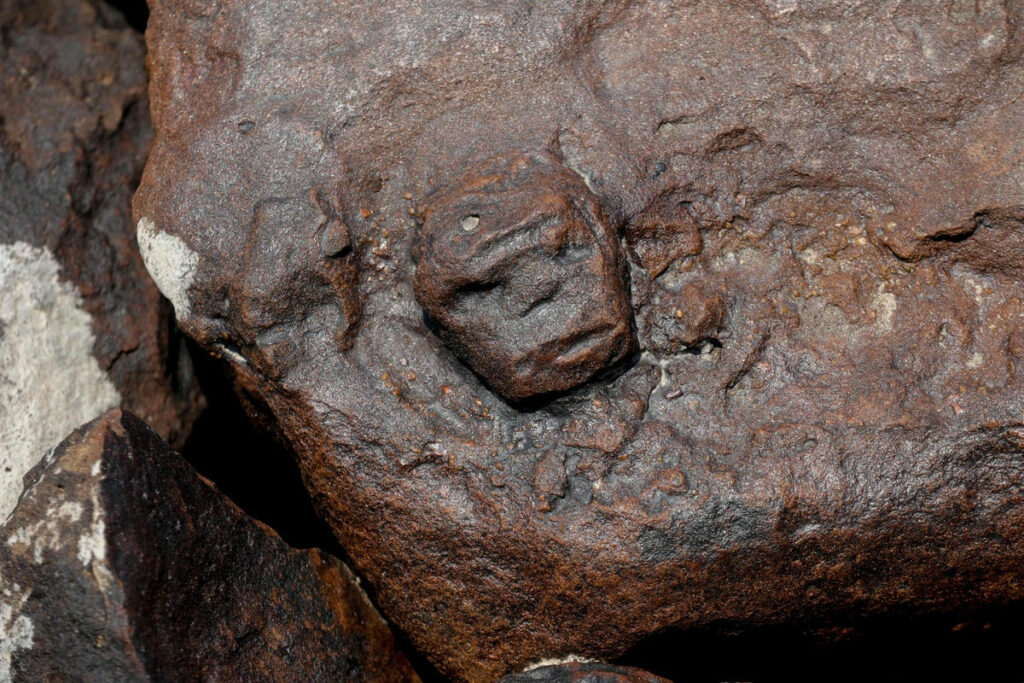Introduction
The Amazon rainforest is a place of boundless mystery and wonder, hiding countless secrets within its lush, verdant canopy. Recently, an unprecedented drought in this region has unveiled a stunning archaeological find that has captivated the world. As the waters of the Negro River, a major tributary of the mighty Amazon, receded to record low levels, more than 100 ancient rock carvings emerged from the riverbed, revealing a glimpse into the artistic traditions of long-lost Amazonian civilizations.

These petroglyphs, which may date back as far as 2,000 years, have been discovered at the “Encontro das Águas” (Meeting of the Waters) location near the city of Manaus, Brazil. The intricate carvings depict a variety of subjects, including human figures, animals, and mesmerizing geometric patterns, providing an invaluable window into the cultural and artistic heritage of the region.
Leading the exploration of these mysterious artworks is Carlos Augusto da Silva, an Indigenous archaeologist from the Federal University of Amazonas. In this article, we will delve into the significance of this remarkable discovery, the insights it offers into ancient Amazonian civilizations, and the ongoing efforts to unravel the secrets hidden within these ancient petroglyphs.
The Drought that Revealed Amazonian Antiquities
The Amazon rainforest is no stranger to droughts, but the current one has been particularly severe. Caused by a combination of climate change, deforestation, and changing weather patterns, this drought has had a profound impact on the region, affecting both the environment and the people who call the Amazon home.
As the waters of the Negro River receded, the riverbed began to reveal long-hidden secrets. It was here, at the “Encontro das Águas,” where the ancient petroglyphs were discovered, their intricate carvings emerging from the dwindling waters.

“It was truly a remarkable sight,” says Carlos Augusto da Silva, the archaeologist leading the exploration. “As the water levels dropped, these incredible artworks began to appear, like ghosts from the past emerging from the river. It was as if the land was revealing its secrets, inviting us to uncover the stories it had held for centuries.”
The petroglyphs, which are estimated to be between 1,000 and 2,000 years old, were likely created by the Indigenous peoples who once thrived in the region. These ancient civilizations, whose names and histories have been largely lost to time, left behind a remarkable legacy in the form of these captivating rock carvings.
Deciphering the Mysteries of Amazonian Petroglyphs
The petroglyphs discovered at the “Encontro das Águas” site are a true marvel, showcasing a level of artistic sophistication that has surprised and delighted researchers. The carvings depict a wide range of subjects, from human figures engaged in various activities to intricate geometric patterns and representations of animals.
“What’s really remarkable about these petroglyphs is the level of detail and complexity they display,” explains da Silva. “The human figures, for example, are not just simple outlines, but rather detailed representations with distinct features and poses. And the geometric patterns are incredibly intricate, suggesting a deep understanding of design and symbolism.”

One of the most intriguing aspects of the petroglyphs is the way they are arranged on the rocks. Many of the carvings appear to be grouped together, forming what seem to be narrative scenes or larger compositions. This suggests that the ancient Amazonian artists were not simply creating individual works, but rather crafting complex visual stories or messages.
“It’s as if these petroglyphs were meant to be experienced as a whole, rather than as isolated pieces,” says da Silva. “The way they are arranged and grouped together hints at a deeper meaning or narrative that we’re still working to decipher.”
Unlocking the Secrets of Ancient Amazonian Civilizations
The discovery of these petroglyphs has the potential to shed new light on the history and culture of the ancient Amazonian civilizations that once thrived in the region. By studying the artworks and their placement, researchers hope to gain valuable insights into the lives, beliefs, and artistic traditions of these long-forgotten peoples.
“These petroglyphs are like a window into the past,” explains da Silva. “They offer us a glimpse into the worldview and artistic expression of the Indigenous peoples who lived in this region centuries ago. By understanding the meaning and symbolism behind these carvings, we can begin to piece together a more complete picture of their society and way of life.”

One of the key areas of focus for researchers is the potential connection between the petroglyphs and the mythology and cosmology of the ancient Amazonian civilizations. Many of the carvings appear to depict mythological figures or scenes, suggesting a deep spiritual and cultural significance.
“The presence of animal and human figures, as well as the intricate geometric patterns, suggests that these petroglyphs may have been imbued with symbolic meaning,” says da Silva. “They could represent important deities, creation myths, or even rituals and ceremonies that were central to the lives of these ancient peoples.”
By deciphering the meaning and symbolism behind the petroglyphs, researchers hope to gain a better understanding of the social, political, and religious structures that underpinned these long-lost Amazonian civilizations. This knowledge could, in turn, provide valuable insights into the cultural diversity and resilience of Indigenous peoples in the Amazon region.
Preserving and Protecting Ancient Amazonian Art
The discovery of the petroglyphs at the “Encontro das Águas” site has generated a great deal of excitement and interest, both within the scientific community and among the general public. However, with this newfound attention comes the challenge of preserving and protecting these fragile and irreplaceable artworks.
“These petroglyphs are a priceless part of our cultural heritage, and it’s our responsibility to ensure that they are safeguarded for future generations,” says da Silva. “Unfortunately, the very drought that revealed them also poses a threat to their long-term preservation.”
As the waters of the Negro River continue to fluctuate, the petroglyphs are at risk of being damaged or destroyed by exposure, weathering, and potential vandalism. To address this challenge, the team of researchers and local authorities have implemented a comprehensive conservation and monitoring program.

“We’re working closely with the local communities and Indigenous groups to develop a plan for the long-term protection of the petroglyphs,” explains da Silva. “This includes regular monitoring, the installation of protective barriers, and the implementation of educational initiatives to raise awareness about the importance of these ancient artworks.”
In addition to the on-site conservation efforts, the researchers are also exploring ways to digitally document and preserve the petroglyphs. By creating high-resolution scans and 3D models of the carvings, they hope to create a comprehensive digital archive that can be used for research, education, and public engagement.
“By preserving these petroglyphs, both physically and digitally, we’re not just protecting a piece of history – we’re safeguarding the cultural legacy of the Indigenous peoples who created them,” says da Silva. “These artworks are a testament to their ingenuity, creativity, and deep connection to the land, and we have a responsibility to ensure that their stories are not lost to time.”
Conclusion: Uncovering the Wonders of Ancient Amazonian Art
The discovery of the ancient petroglyphs at the “Encontro das Águas” site is a remarkable and humbling reminder of the enduring cultural richness of the Amazon rainforest. These captivating artworks, which may date back as far as 2,000 years, offer a tantalizing glimpse into the lives, beliefs, and artistic traditions of the long-lost Amazonian civilizations that once thrived in this region.
As researchers like Carlos Augusto da Silva work tirelessly to unravel the mysteries of these petroglyphs, they are not just uncovering the secrets of the past – they are also shedding light on the resilience and ingenuity of the Indigenous peoples who have called the Amazon home for millennia.
Through the study and preservation of these ancient artworks, we have the opportunity to gain a deeper understanding of the cultural diversity and interconnectedness of the Amazon region. By honoring the legacy of these long-forgotten Amazonian civilizations, we can also inspire a renewed appreciation for the importance of protecting and preserving the natural and cultural heritage of this remarkable place.
The petroglyphs of the “Encontro das Águas” are a testament to the enduring power of human creativity and expression. They remind us that even in the face of adversity and the passage of time, the artistic and cultural traditions of the past can still captivate and inspire us in the present. As we continue to uncover the secrets of these ancient Amazonian artworks, we can only imagine the wonders that still lie waiting, hidden beneath the waters and within the depths of the rainforest.

